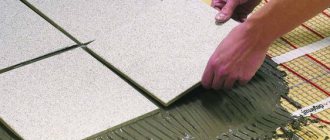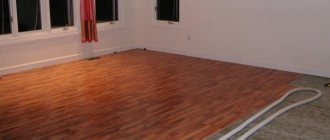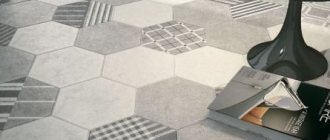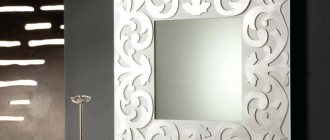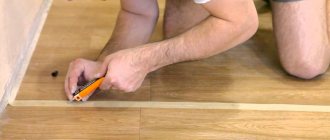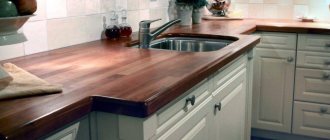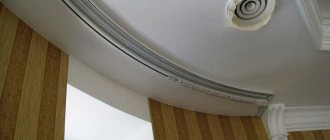- Cold welding of linoleum: simplicity and efficiency
- How to glue linoleum together: methods of soldering the material
- Advantages and disadvantages of hot welding linoleum
- Cold welding of linoleum: pros and cons of technology
- Choosing adhesive for joints of linoleum, plastic and metal
- Types of glue for cold welding linoleum
- How to choose the right cold welding for plastic
- Which cold welding is better for aluminum: tips for choosing a composition
- How to use cold welding when laying linoleum
- How to cut linoleum at home and how to do it correctly
- Laying linoleum: how to join sheets before soldering
- Glue consumption for welding linoleum seams and methods of its application
- How to use cold welding for linoleum
- Video: cold welding of linoleum
Cold welding of linoleum: simplicity and efficiency
Cold welding of linoleum allows you to quickly and accurately connect parts of the floor covering. This method of soldering material is so simple that it is easy to use even at home. From this article you can find out what products are used to join linoleum, plastic and aluminum. The text provides a comprehensive overview of the characteristics, advantages and disadvantages of cold welding, as well as guidance on its use.
How to lay linoleum: methods of laying linoleum (read more)
Using cold welding for linoleum, you can quickly and accurately remove damage to the floor covering.
How to glue linoleum together: methods of soldering the material
Linoleum is one of the most popular materials used as flooring. It has both advantages and disadvantages. A significant disadvantage of this material is the presence of seams. They are formed when joining linoleum between adjacent rooms, as well as in cases where it is necessary to cover a large area. On the other hand, modern soldering methods make it possible to easily and quickly deal with this problem without using metal thresholds to mask the seams.
The method of soldering linoleum can be cold or hot.
Before delving into information about how to connect linoleum to each other, it is worth studying the properties and features of this material. This type of flooring is used as finishing in office, residential and industrial premises. The material is easy to install, durable and water-resistant, non-slip and does not require special care. In addition, there is a huge selection of colors and textures on sale. Buyers can even purchase insulated coating options.
The advantages of linoleum also include its size. The material is produced in the form of rolls of various widths. Thanks to this, the buyer can choose the optimal size of linoleum for each room in his home. If you need to lay material in all rooms, then you won’t be able to do without cuts. Moreover, it is not always appropriate to cover the joints of linoleum with metal thresholds or fix the edges of the material with nails. The best option in this case would be to solder the sheets using a hot or cold method.
On a note! Joining linoleum with cold welding adhesive or hot soldering of sheets is ideal for high traffic areas, as well as rooms where the flooring is subject to constant mechanical stress.
Options for connecting linoleum to each other
Before soldering linoleum, you need to choose the appropriate type of welding in specific conditions. All types of joining modern linoleum can be divided into two main types:
- Thermal;
- Mechanical.
Mechanical methods include joint processing, which does not use chemicals or methods of hot melting of the coating. One such option is to install a metal threshold. A metal or plastic threshold is used in cases where it is necessary to seal linoleum seams in short areas and in places where linoleum transitions to another type of coating. It is certainly not suitable for joining long seams.
The second common option is double-sided tape for linoleum. However, this joining option is not durable and over time the adhesive tape loses its adhesive qualities, the seams begin to separate, and the edges of the coating begin to curl. Even if you make the joint very carefully, it will still be visible on the surface of the coating and dirt will gradually accumulate in it.
Thermal methods include the following:
- Cold welding, where the gluing process is carried out at the molecular level by chemically melting the edges of linoleum;
- Hot welding, in this case the gluing of linoleum is carried out by heating using low-melting components.
Important. To carry out hot welding, it is advisable to invite competent specialists who have experience and the appropriate tools. To carry out such work, a special hair dryer for linoleum is used, which you need to know how to use.
Advantages and disadvantages of hot welding linoleum
The connection of linoleum sheets by hot welding is carried out due to the effect of temperature. This method is most often used in industrial premises where floors experience serious mechanical stress. The method is also recommended for soldering linoleum in rooms with high traffic, where the coating wears out quickly. It is advisable to use hot seam processing when it is necessary to connect long-term joints.
To connect long-distance joints, it is better to use hot welding.
How to weld linoleum using the hot method?
- For work, a special burner is used, which is called a hot air gun. This tool allows you to melt the material by heating up to 400 °C.
- Before joining the linoleum, you need to prepare the joint area. To do this, use a chisel to select a part of the material along the entire length of the seam so that a groove is formed.
- The welding cord is threaded into the torch, and the device is plugged into the mains.
- To glue the cuts, you need to place the heated filler cord into the groove. This material has almost the same structure as linoleum. The cord is applied with slight pressure, all actions must be careful and very precise.
- Using special scissors, the blades of which have a crescent shape, it is necessary to remove excess glue before it hardens. The cuts are made carefully so that they do not turn out too deep.
- After the molten cord cools, a reliable connection is formed.
- The scar in the junction area must be carefully cleaned.
Advantages of hot gluing linoleum:
- strong connection;
- absolutely sealed seam;
- reliable and durable results.
The main advantage of gluing linoleum using the hot method is a very strong connection.
The disadvantages of the hot method include some limitations in its use. This welding option is not suitable for all types of linoleum. It is designed for joining rigid and dense fabrics. The hot method is not suitable for gluing soft linoleum. Under the influence of high temperature, the material will melt, so the joint will be damaged. The same applies to low-quality budget types of coating.
Cold welding for metal: scope of application (read more)
In addition, hot welding requires certain skills. Without knowing how to properly glue linoleum using this technology, it is very easy to make a mistake and ruin the coating.
On a note! Sometimes craftsmen use a powerful electric soldering iron instead of a torch.
This option is suitable as an alternative, but it will not help to achieve a perfectly even seam.
Linoleum
155 votes
+
Vote for!
—
Vote against!
Aesthetic appeal and good performance characteristics, a variety of design and color solutions, safety and durability of use distinguish linoleum into a separate group of modern floor coverings, and the ideal ratio of high quality and affordable price makes its use almost universal.
Content:
- Methods for joining linoleum
- Hot welding
- Cold welding
2. Cold welding of linoleum with glue: varieties
3. Technological features of cold welding
- Creating a Weld
- Cleaning the future seam
- Cold welding application
- Removing excess glue
Methods for joining linoleum
Being a universal floor covering, linoleum is successfully used in residential and office premises, warehouses and industrial areas. To perform high-quality linoleum flooring, the contractor must have extensive experience and knowledge of the basics of installation technology, a professional approach and accuracy. When arranging a floor with linoleum, non-standard situations may arise that require prompt and, most importantly, correct decisions to be made. So, for example, during the work process, quite noticeable gaps can form at the joints of the canvases, which can only be hidden and made into a single piece by using hot or cold welding for linoleum. To get a high-quality seam, you must follow certain rules and recommendations.
The main methods of welding linoleum with your own hands are 2 methods:
- hot way
- cold way
each of which has its own undeniable advantages. At the same time, we note right away that the simplest and least labor-intensive method, which does not require special skills, is cold welding of linoleum with glue, while hot welding is a very painstaking job, which can only be completed by an experienced professional using special tools.
Hot welding
Hot welding is applicable for sealing seams of commercial linoleum in those rooms where there is a significant intensity of mechanical impacts on the floor surface, for example, in public buildings. This coating is characterized by increased strength and high cost, which means it will require professional skills and a special tool - a welding heater (soldering iron) and filler rods with a round or triangular profile made of plasticized polyvinyl chloride. Note that high-quality welding is possible only after gluing the coating to the floor surface, so the best time to perform welding activities is the next day after gluing.
The technology for welding linoleum is as follows:
Before starting work, edges are pre-cut on adjacent panels specifically to the shape of the rod, thereby forming V-shaped grooves. A welding heater is used to generate hot air streams. Moving through the heating elements, the temperature of the compressed air rises and reaches 300-400 °C in the area of the tip. During the welding process, the torch, and along with it the filler rod, is passed along the joint. The flow of hot air softens the surface of the linoleum and the two sheets are reliably welded under the action of the pressure roller. After the seam has cooled a little, using an arc-shaped knife or a flat chisel, carefully cut off the part of the fused cord protruding above the coating and grind the seam until a smooth surface is obtained.
If you don’t have a welding torch at hand, then you can use a regular soldering iron, which can probably be found on a workbench. However, the result may be disappointing - you will not be able to get a uniform, beautiful seam along the entire length of the coating. Therefore, if you need a high-quality, perfectly even seam and you do not have special equipment, then it is better to use cold welding.
Cold welding
So, what does the expression “cold welding for linoleum” mean - a combination of seemingly two opposite concepts? The answer lies in the technology of connecting two canvases - a special glue, being a solvent, turns the edges of the material into a liquid state in a short period of time. The canvases are connected, and after the solvent evaporates, an aesthetic connection of increased strength is formed. The technological process of cold welding completely eliminates the treatment of linoleum with hot air.
The end result - a strong and smooth connection - is in no way inferior in quality to the result of a joint based on temperature fusion, and there is no need to purchase an expensive soldering iron. Therefore, to connect household covering sheets, as well as to obtain an intricate or complex (in shape and configuration) seam, experts recommend using the method of cold welding of linoleum, the price of which is affordable for any category of buyers. The main disadvantage of the method is that the adhesive contains volatile solvents that are harmful to human health. Therefore, when performing cold welding, ensure fresh air movement in the room.
Cold welding of linoleum with glue: varieties
Depending on the glue used, cold welding can be of two types:
- cold welding with A-glue,
- cold welding with C-glue.
Have you purchased linoleum and, having barely had time to lay it out, want to combine several of its parts into a single piece? Then use the first type (A), designed specifically for welding seams of “freshly laid” coating. But if your floor covering has had time to sit in the apartment for some time, and you begin to notice slightly loose seams, then it is better to use the second method (C). The main difference between glue A and glue C is consistency, in other words thickness.
C-glue is much thicker, since its task is to connect the separated joints of two canvases, and this is several millimeters. By pouring glue C between the covering sheets, you fill the empty space, which, after drying, forms an extremely strong bond. Cold welding can be done without tape, since the thick glue will not spread, which means that the likelihood of unwanted melting of the coating is zero.
How to glue linoleum using cold welding with A-glue?
A-glue “works” in a completely different way: new parts of linoleum tightly laid on top of each other must be bonded. The glue actually melts the edges of the coating, forming a solid and perfectly smooth panel. The unique properties of the adhesive ensure a high-quality and durable weld on the floor covering, especially if it is securely glued to the subfloor.
Technological features of cold welding
Creating a Weld
If the flooring has been purchased but not yet laid, then the primary task will be to trim the sheets to obtain a minimal seam. To do this, overlap two parts of linoleum (at least 5 cm). The cut line will be located in the middle of the overlap. Using a pencil and a ruler, markings are applied, along which the material is subsequently cut with a special wallpaper knife. The edges obtained in this way will fit perfectly together.
The reliability and durability of the weld, and linoleum in general, are determined by the strength of the fastening and the immobility of its edges. It should be remembered that glued linoleum does not deform during operation, it is not afraid of wet cleaning in the room and even rearranging pieces of furniture. The covering can be glued to the floor using glue or double-sided tape.
If your room has an area of more than 20 sq.m., then gluing the covering is a mandatory stage in the design of the floor space.
Cleaning the future seam
Since the glue contains harmful volatile solvents, gloves become a mandatory attribute of the welding process. Using a vacuum cleaner, thoroughly clean the joint from particles of dust and dirt. If water gets into the seam, wipe it dry.
Since cold welding, coming into direct contact with the front surface of the floor covering, can make it less attractive and spoil the overall impression of the interior, you should think about protecting the edges of the linoleum panels, especially if the linoleum has a glossy surface. To avoid unpleasant surprises in the form of damaged, melted coating, you need to use wide, single-sided masking tape. It can be glued in two strips to each panel along the edge, or one strip can be glued to the future weld. Then carefully cut the tape at the connection area, avoiding possible damage to the coating.
The photo shows soft linoleum, for welding which two strips of masking tape are used.
Cold welding application
To perform cold welding, you must carefully cut the tape over the joint of the panels, and when applying the adhesive composition, you should take into account the presence of a “needle” on the tip of the tube, along which the glue will flow. Therefore, to avoid excess glue getting onto the surface of the coating, keep a cotton swab ready. Slowly apply glue to the joint between the panels being fastened. To do this, just run the tube along the seam, evenly dosing the composition along the entire length of the surface to be treated. While working, maintain the height of the glue strip at 4 mm and monitor the movement of the needle strictly along the cut.
There are two ways to apply glue:
The first method is to apply glue to two canvases at once, as in our example. The glue that gets into the seam interacts with the coating and polymerizes.
The second method is to apply glue to only one panel, which is processed separately and then attached to the floor surface. Next, the adhesive composition is applied to the second canvas. They are laid as tightly as possible next to the first one and carefully leveled, thereby ensuring high-quality joining of the glued pieces.
The method you choose is determined by your convenience, the consistency of the adhesive, the current condition of the flooring and other factors.
After the glue has dried (1-2 hours), you can safely walk on the floor.
Removing excess glue
After the glue has dried, you can remove the masking tape.
When performing cold welding, some of the adhesive may come out. There is no need to rush to remove excess during the welding process, since the adhesive may peel off from the coating, and this can lead to a decrease in the quality of the weld. In addition, there is a possibility that, using dirty tools, the wet layer of glue will become dirty. And finally, the last argument is that dried glue is easier to cut off.
Note! Fresh cold welding is a little springy, and at the moment of tension when cutting, a depression may appear, so it is recommended to remove excess in two passes.
As you can see, cold welding of linoleum is a simple job that absolutely anyone can successfully handle!
You can learn how to cold weld linoleum at a high quality level and in a short time from the video on YouTube.
Cold welding of linoleum: pros and cons of technology
The instructions for using cold welding convince us that this method is much simpler than the technology of hot gluing the material. The work does not require special skills or knowledge, and there is no need to purchase special equipment. This method is suitable for renovation work in an apartment that is carried out independently.
The cold welding method is much simpler and more accessible, but requires even cutting of the joints.
For welding, a special glue is used that acts as a solvent. It softens and fuses the edges of the canvas. After the glue dries, a durable monolithic coating is formed. The seam is so thin and neat that it is difficult to notice unless you look closely.
The use of cold welding has many advantages:
- the result of gluing is quite difficult to notice with the naked eye;
- the work requires a minimum set of tools and materials - masking tape and special glue;
- the process will not take much time;
- the ability to process joints of different widths;
- the low price of cold welding for linoleum, combined with the economical consumption of glue, allows you to seal large seams with just one tube (this option is much more profitable than masking the joints with metal thresholds).
A significant disadvantage of cold welding is the limitation on the use of this technology for joining multilayer linoleum. In this case, the joint between the canvases will be too noticeable. It is also not recommended to use the cold method if a layer of insulation is laid under the linoleum. In addition, the glue contains toxic substances, so during work it is imperative to protect the respiratory tract with a mask or respirator.
Note! When purchasing glue, it is necessary to check the quality of the composition and its compliance with the requirements of the SNiP standards system.
It is not recommended to use the cold method if the linoleum is insulated.
Welding Features
If there are seams or joints, the integrity of the floor covering is compromised. This not only spoils the aesthetics, but also reduces functionality. The edge of the canvas will constantly bend, you will have to cling to it with your feet, and when washing the floor, water will get under the layer. The result is a reduction in the service life of linoleum.
How to solve this problem? The best way is to glue the joint by cold welding. There is also hot welding, but it requires special knowledge, equipment, and materials (cord, hair dryer). The cold method is the best choice; it is accessible to everyone. A special glue is used to join the edges of the PVC material. The advantages of the technique are obvious:
- solidity of the seams, while they are almost invisible visually;
- no need for special equipment or expensive tools;
- simplicity of work - no skills are required to perform it;
- low price - glue is inexpensive, so repairs will be budget-friendly, product consumption is low;
- short installation period - welding work will not take long, it will take a minimum of time;
- versatility - this method can be used to glue small and large, complex joints.
Cold welding has few disadvantages. You cannot glue very thick, multi-layer linoleum using such products. The joint will not be strong and will remain noticeable. It is also not recommended to weld seams with glue if felt-based flooring is used. This material is thick and may not melt well from the components of the product. However, there are special adhesives for this type of linoleum.
Choosing adhesive for joints of linoleum, plastic and metal
You can find many varieties of linoleum on the construction market. To make the coating, manufacturers use different types of raw materials, so not only the appearance, but also the properties of the material may differ. When thinking about what glue to use to glue linoleum to linoleum, you must take into account that these compositions are not universal.
The best choice for working with coating is adhesive made on the basis of polyvinyl chloride. Most modern types of linoleum are made from this raw material. Despite this, you can find canvases made from other materials on sale. Before purchasing glue, be sure to check the composition of the linoleum.
Types of glue for cold welding linoleum
There are three types of glue for joining seams between sheets of linoleum - A, C and T. They have different consistencies and degrees of impact on the material. When choosing a composition, you need to take into account the size of the gap.
Type A product is an adhesive with a liquid consistency. It contains a large amount of solvent component. This option is used to connect segments between which a small gap has formed - up to 2 mm. Thanks to its liquid consistency, this adhesive easily penetrates narrow crevices and fuses material fragments well into a solid coating. The quality result depends on how tightly and well the sheets are joined. Linoleum sheets should lie flat. The ideal result is obtained by joining factory edges.
There are three types of linoleum glue on sale - A, C and T.
Type C product has the appearance of a mastic for linoleum with a thick consistency. This adhesive is designed to seal gaps measuring 2-4mm. The mastic contains less solvent, and the main component is polyvinyl chloride. This mass is so effective that it can perfectly join sheets with uneven edges.
On a note! Using a type C product, you can repair the coating. This glue allows you to get rid of minor damage. Due to the low price of cold welding, you can save a lot and restore the coating without resorting to a complete replacement of linoleum.
Type T glue is used very rarely. It is intended for professional use when connecting sections of multi-component linoleum. This product contains polyester and polyvinyl chloride. Due to these components, the seam is elastic and at the same time very durable.
According to reviews, cold welding for linoleum of these brands is considered the best:
Homakol S 401 is used for soldering PVC boards.
- Werner Muller - type A composition, complies with international standards and is used to create durable seams at the junction of materials. Glue consumption – 44 g/25 lin. m.
- Tarkett is a universal-purpose composition that is suitable for joining cuts with uneven edges and welding multi-layer linoleum.
- Homakol S 401 – used for gluing commercial materials, as well as for soldering PVC boards.
- Rico - contains no toxic substances, which were replaced by polyurethane foam and artificial rubber. Moreover, this did not affect either the price or the quality of the glue.
In the budget category, Sintex and Secunda are recognized as the best products.
Types of compositions
One of the most common options is cold welding type A. This option has found application in joining fairly soft coatings. This mixture is capable of qualitatively combining only new material that has not been used before. The consistency of type A composition is quite liquid .
Thanks to this, the seams are thin and practically invisible to the naked eye. In cases where the work was carried out efficiently and the coating fits tightly to the floor, the presence of a seam can only be detected by touch. This welding method is ideal for joining linoleum with small patterns or complex patterns. If you carefully select the contour, the seams will become almost impossible to detect. In this case, the floor covering will have an impeccable appearance. So, after connecting the linoleum joints, it is best to treat them with these compounds.
We recommend: Laying ceramic tiles on the floor
Cold welding type C
The second type of cold welding of this material is type C welding. These compositions differ from type A in their greater viscosity and thicker consistency. Most often, this method is used to repair previously laid material that has been damaged during operation.
Type C cold welding can restore the integrity of the web . if the seam thickness does not exceed 4 mm. The mixture fills existing seams, while forming new, stronger and more wear-resistant ones. This coating will last for a long period of time.
Cold welding type T
The next method is type T cold welding. It is less widespread than the first two methods, since in order to master the techniques of its use, a certain professional training is required.
The toxicity of this glue is significantly higher . compared to analogues of other types. Cold welding of linoleum with T-type glue is intended only for joining segments of polyester-based material consisting of PVC. This explains the fact that it is more difficult to master the skills of this welding, and without special training, the quality of the seams will not meet consumer standards.
How to choose the right cold welding for plastic
Polyvinyl chloride and other types of polymers are widely used in modern industry, so there is a separate type of adhesive on the market for cold welding of plastics.
One-, two-component and rod products are available on sale.
This tool is used:
- for repairing plastic components of the body part of technical products;
- connection and alignment of car body parts;
- repair of fishing gear;
- soldering of units and elements made of plastic.
There are several types of glue for merging plastic using cold welding technology:
- One-component – a universal-use product, suitable for joining any types of plastic. Its consistency is the same as that of conventional adhesive used for office needs.
- Two-component - the main components of this glue are resin and filler. According to the instructions, cold welding of this type is mixed in equal proportions before direct use.
- Rod - looks like a pencil with adhesive filling inside. Before use, the product is thoroughly mixed to obtain a homogeneous mass.
When choosing a composition for work, it is imperative to take into account all the characteristics of the materials that will be glued. First of all, you should find out what temperature cold welding can withstand. Some parts are exposed to high thermal conditions, so it is important that the connection can withstand such stress. Standard glue options (depending on the brand) perform well in the temperature range from 200 to 260 °C.
When choosing cold welding, you need to take into account all the characteristics of the materials that will be glued together.
In addition, the degree of loads that the connection can withstand (tensile and shear strength), as well as the drying speed, are important.
On a note! For gluing plastic cases and thin parts, it is better to use a liquid compound. Rough types of work, such as connecting elements of sewer and heating systems, leveling a bumper or fastening storm drains, require more reliable fixation. For these purposes, it is recommended to use welding with a consistency similar to plasticine.
Advantages and disadvantages
In terms of their chemical composition, various types of cold welding are reactive polymer mixtures. The solvent they contain melts the edges of the canvases, forming, with the participation of an adhesive, a seam that is homogeneous in structure with the PVC material.
This method of joining the coating has advantages:
- versatility of use - used for joining and repairing both new and old coatings;
- waterproof welding;
- high wear resistance of the seam;
- the ability to use a minimum set of simple tools;
- no professional skills required;
- inconspicuous seam.
By selecting a specific type of mixture, you can glue household, semi-commercial and even commercial grade linoleum with a felt or PVC base layer.
Cold welding makes the coating monolithic.
Various glue consistencies allow you to solder fabrics with a joint width of up to 0.4 cm, and make curly seams with appliqué.
The disadvantage of cold soldering is that these mixtures do not provide a high-quality connection of multilayer coatings.
The toxicity and pungent odor of liquid mixtures requires the use of protective equipment for the respiratory system, exposed areas of the body and eyes.
Read more in the article “Cold welding adhesive for linoleum: description, purpose and choice”
Which cold welding is better for aluminum: tips for choosing a composition
The composition intended for welding aluminum is sold in the form of a liquid two-component adhesive or mastic. Epoxy resin is used as a base. In addition, the composition includes additives and special fillers, which increases the strength and resistance of the connection to high temperatures and aggressive substances. These components also improve the adhesive properties of the weld. This glue will be very useful if you need to carry out repairs in difficult conditions.
Construction stores offer a huge range of products for gluing aluminum, both domestic and foreign. To avoid making a mistake with your choice, you need to:
The market offers a huge range of cold welding for aluminum.
- make sure that the characteristics of the glue meet the requirements of the types of work that will be performed with its help;
- give preference to universal options designed for gluing aluminum to other types of materials;
- carefully study the manufacturer’s recommendations along with the instructions;
- consult with the seller;
- get acquainted with consumer reviews left about cold welding.
In addition, you should take into account the fact that liquid compositions take much longer to dry than mastic.
How to use cold welding when laying linoleum
The process of soldering the coating is quite simple. Even a beginner can cope with this work, the main thing is to fully comply with the technology and act carefully. Before gluing linoleum joints, you need to make sure that all the necessary tools and equipment are at hand.
When purchasing linoleum, you need to take the material with a margin of 5-6 cm.
In addition to glue, you will need:
- Ruler and square - it is advisable to use metal models for these purposes. Products made from such material are not deformed. At the same time, they are very thin and smooth. The ruler must be long.
- Masking tape – as an alternative, if you don’t have it, you can use a double-sided version.
- Cutting tool - the knife blade must be sharp so that all cuts are as neat as possible.
- Protective backing - placed under the seam to prevent damage to the floor during the cutting process of linoleum. For these purposes, plywood, thick cardboard, chipboard or a piece of old linoleum can be used.
- Protective equipment - a mask or respirator to protect the respiratory tract, as well as gloves.
On a note! When buying linoleum, you need to take the material with a reserve, since for leveling and high-quality joining of the canvases you will need an additional 6 cm.
How to cut linoleum at home and how to do it correctly
To cut natural linoleum and polyvinyl chloride coatings, you can use several tool options.
To cut linoleum, you can use a construction knife, a linoleum knife, and a flooring cutter.
A construction knife is a tool with a retractable design with a replaceable cutting blade that is rigidly fixed. Outwardly it resembles a stationery knife, but it is adapted for construction needs. Used for cutting thin and thick materials. During operation, it is imperative to control the movement of its blade.
A linoleum knife is a tool whose cutting element is curved; in some models it has the shape of a hook. Suitable not only for cutting linoleum, but also for cutting carpets and other soft coverings. This knife is convenient for making straight and curved cuts.
The cutter for flooring material has many modifications. The option, which is adapted for linoleum, is equipped with a disk-shaped cutting element, which is fixed on a special frame with a handle. With its help you can make high-quality cuts with a smooth edge.
It is very convenient to cut linoleum with a hook-shaped knife.
The strength of the soldering of the sheets depends on how smoothly the cuts are made. Before gluing linoleum using cold welding, you need to carefully and accurately cut the material. Before starting work, the coating is kept indoors for 1-2 weeks. The exact period is indicated by the linoleum manufacturer. This is necessary so that the material adapts to the temperature conditions of the room.
In order not to make mistakes when cutting linoleum, it is advisable to take measurements several times. Based on these data, a calculation is made. By drawing up a layout of the canvases, you can make your work much easier.
Allowances when cutting material:
| Room length, m | Allowance size, mm |
| 5-6 | 20 |
| 6-10 | 40-50 |
| 10-12 | 50-70 |
Allowances compensate for the natural shrinkage of the material, as well as losses during the cutting process. Cutting linoleum should be done with confident movements, applying pressure. After this, the canvases are kept indoors for 3 to 5 days until they straighten.
Note! You should not try to remove “waves” from the surface in any way. If the material is of high quality, it will straighten itself.
A construction knife for linoleum looks like a stationery knife.
Then the canvases are laid out around the room and in places where communications or decorative elements protrude, the excess is cut off. Before doing this, you need to prepare a pattern and use it to transfer the markings onto the linoleum.
Laying linoleum: how to join sheets before soldering
Before soldering linoleum, you need to make sure that its sheets are fixed correctly and their edges are well joined. In this case, the glue can evenly fill the gap and form a strong connection.
Before gluing, the base is cleared of debris and dust. If linoleum with a pattern is laid in the room, one sheet should be laid out on the floor, and the second should be placed on top of it with an overlap of approximately 5 cm. A protective backing should first be placed under the material. It must be present along the entire length of the joint. The position of the segments in relation to each other changes until the pattern in the joint area coincides.
Then markings are applied to the top sheet indicating the joint location. It is desirable that this line passes through the center of the overlap. Now you can start removing excess material. To do this, you need a long ruler, which needs to be placed along the future seam. Be sure to make sure that both canvases are underneath. Using a ruler, the canvas is pressed well, and a cut is made along it. To make the joint for welding linoleum smooth and neat, you need to cut two sheets at the same time.
Fixing the material can be done in different ways. To achieve a reliable result, you need to cover the entire floor surface with glue. The second method involves fixing the material using double-sided adhesive tape. In this case, the canvases are not attached so rigidly. Most often, this method is used if linoleum will be used as a temporary covering. The adhesive for fixing the canvas to the floor is prepared according to the manufacturer's instructions, which is included with the package. It is better to use a spatula to apply the composition.
To properly join the sheets before soldering, you need to use adhesive tape.
There is a certain procedure for installing the coating. First, the material is attached to the wall. Next, the glue is applied to 60-70% of the linoleum using wave-like movements. The amount of composition must be controlled so that there is no excess. Then the canvas must be carefully lowered and smoothed over the entire area. To do this, its surface is rolled with a heavy roller. The covering is installed in the same way on the second half of the room.
On a note! If a tool such as a heavy roller is not at hand, you can use a building level instead. It should first be wrapped in soft cloth.
Preparing the future seam
In order for the result of cold welding not to disappoint, it is necessary to obtain a gap-free and very tight fit of the welded linoleum sheets to each other. If you connect sheets with factory cutting, then there will be no problems with fit. You just need to move them closer. When joining pieces of linoleum between rooms, the tightness of the fit is achieved by simultaneously cutting these two pieces of material. To do this, follow the following five points.
1. Leave an overlap of the opposing sheets when laying - approximately 4-6 cm. When purchasing linoleum, provide for this moment by adding double the width of the overlap to the calculated length.
2. We carefully outline the location of the future joint. It should fall in the middle of the resulting overlap.
3. Place a piece of linoleum, a wooden ruler or a strip of thin plywood under the cutting area. This is necessary to guarantee cutting through the entire thickness of both mating sheets at once.
4. Apply a metal ruler along the marked line and press it firmly. We make a confident cut with a construction knife of both sheets to their full thickness.
5. Now, having discarded the separated strips of the top and bottom layers of the coating, and removed the lining for cutting, we connect the canvases joint to joint.
So, the surface is cleaned, the joint of the panels is without gaps, the seam is dry. Let's get down to the main thing - cold welding of linoleum.
Welding technology
- To prevent possible spreading of the glue along the edges of the coating surface, apply paper masking tape to the seam. This precaution is justified, because contact of cold welding with the front surface can deprive it of its gloss and attractiveness, which will certainly be noticeable. To be on the safe side and get a wider protective zone, the tape is glued in two stripes, with its own strip on the edge of each canvas.
- Very carefully, trying not to damage or cut off the edges of the linoleum at the joint, we cut through the tape with a construction knife. If, when performing the first step, the edges of the joining surfaces were protected with two strips of masking tape, then the second step is skipped.
- Screw a needle cap onto a tube of glue of the desired type. We start working from the comfortable side of the seam. We insert the needle cap into the seam to be welded. With one hand we hold the needle at the junction, pressing it lightly, and with the other we press smoothly on the tube, trying to achieve a uniform supply of glue. As soon as the diameter of the exposed glue on the masking tape reaches 3-4 mm, you need to start moving the needle smoothly along the entire seam. It is very important to achieve a uniform height of the glue strip. It is at the selected height of 3-4 mm that the glue gets into the seam and high-quality connection (welding) of the ends of the laid linoleum is guaranteed.
- Peel off the tape after fifteen minutes. We simply pull it from one edge at an acute angle towards the opposite edge.
- We give the volatile fractions of the glue the opportunity to completely evaporate. An exposure of 2-3 hours is sufficient.
- We admire the resulting seam.
We recommend: Epoxy floor coating
You can walk on the floor without fear of disturbing something at the joint within an hour to an hour and a half after the glue has dried.
The same technology and the same glue will help in repairing damaged (as a result of a tear or cut) linoleum. Only the needle tip should be inserted not into the seam, but directly into the place where your coating is damaged.
- The glue used can be applied in different ways. The technology of the first method, when glue is applied to both panels being joined at once, has just been described above. In the second method, the glue is first applied to the edge of one sheet, which is immediately pressed to the floor surface. Then the second canvas is treated with an adhesive composition and laid as tightly as possible next to the first to ensure high-quality joining of the ends of the glued pieces. The choice of method of applying glue depends on the condition and properties of the floor covering, the consistency of the glue used and the ease of work for the performer.
- During the cold welding process, excess adhesive may come out. Do not rush to remove it, as the adhesive may peel off from the coating, and this will reduce the quality of the resulting seam. And if you still use a dirty tool, the wet layer of glue, which becomes the top layer after cutting off the residue, will become dirty. Conclusion - the excess is removed only after the glue has completely dried with a stationery knife. This is done extremely carefully, taking into account the property of fresh cold welding to slightly spring. Because of this, when cutting, it is stretched and a depression may appear at the cut site. This can be avoided by removing excess without much pressure in two passes.
- If, during the welding process, glue does get onto the linoleum surface unprotected with masking tape, do not rush to wipe it off immediately. This can damage the protective layer of the coating and even smear the design in this place. You need to wait for the glue to dry completely and cut it off with a knife.
- With sufficient care, cold welding using type C glue is performed without the use of safety tape. This type of glue is thick and does not bleed.
- Be sure to take care of protective equipment. It is undesirable for cold welding to come into contact with exposed skin, so work with special protective gloves. Respiratory protection will also come in handy. The most toxic is type T glue. Ventilate the room or, if possible, use forced ventilation.
Where can I buy?
Glue of the required type for cold welding of linoleum is purchased in specialized stores and organizations that sell building materials and repair products. Cold welding can be offered to you in the flooring department itself, since it is also produced by divisions of linoleum manufacturing companies. The usual packaging of glue is 100-125 ml. This volume is enough for 40-50 meters of seam for welded coatings with a thickness of 3 mm. Read the instructions, consult with a sales consultant and make the right choice.
And forget about the old-fashioned method of connecting the transition using a metal strip nailed in a checkerboard pattern. Now there is cold welding!
Glue consumption for welding linoleum seams and methods of its application
Before gluing the seams of linoleum, you need to evaluate the quality of its cutting and the shape of the edge. If the joints are uneven, it is advisable to use a product with a high content of polyvinyl chloride. Such sections usually diverge easily, and with the help of a thick composition, all voids can be efficiently filled and the material can be prevented from shifting. Glue with a large amount of PVC is ideal for joining fabrics with complex angular shapes.
If cold welding will be used to glue old linoleum that has been in use for a long time, it is better to use a composition with a viscous consistency. Such products contain a small amount of solvent, but they provide a high quality connection. For gluing a new coating, compositions with a liquid consistency are suitable. After them, the seam turns out to be very neat and almost invisible, but the reliability of the connection is much lower.
To glue old linoleum, it is better to use a compound with a viscous consistency.
There are two ways to apply glue for welding linoleum:
- Using a tube and a needle, carefully lubricate both cuts. Under the influence of glue, the edges are fused and firmly connected to each other.
- First, only one edge is coated and applied to the floor. Then the second cut is processed using glue and placed tightly next to it. After this, the seam needs to be smoothed out.
The consumption of the composition depends on the qualifications of the person who does the gluing, the thickness of the linoleum, as well as the characteristics of the product itself. In most cases, type A solution is used. On average, a tube with a volume of 50-60 mm can cover 25 linear meters. m seam. Grade C glue is more viscous, so its consumption is greater. For processing 25 linear m of seam will require at least 70-90 ml. Some manufacturers indicate the volume of glue in grams. This nuance must be taken into account when calculating the required quantity.
The glue consumption of popular brands is shown in the table:
| Name of glue | Capacity volume | Covered seam length, linear m |
| Axton | 60 g | 5 |
| WernerMuller | 44 g | 25 |
| Homakol S 401 | 60 ml | 25 |
| Rico | 60 ml | 25 |
| Second | 75 ml | 50 |
| Tytan | 100 ml | 45 |
| Sintex | 100 ml | 50 |
How to use cold welding for linoleum
When the cuts and joints of the material are adjusted, you need to make sure that there are no bubbles left under the surface of the canvases. During the welding process, air can move into the joint area and eventually destroy the seam. The canvas should be pressed down with a small press. Before starting work, it won’t hurt to study the manufacturer’s instructions, which indicate how to properly glue linoleum and at what temperature it is recommended to use glue.
On a note! Many adhesives contain aggressive components that can damage linoleum. This is especially true for coatings with a glossy sheen. To prevent the composition from getting onto the front surface, the material along the entire length of the joint is glued with masking tape. This must be done so that only a few millimeters of the edge part remain for the glue to interact. Scotch tape is applied to both edges.
Using a special knife, you need to cut a groove between the sheets. In this case, you need to act very carefully so as not to damage the material on the sides.
The groove between the sheets is filled with glue until it appears above the surface of the tape.
Included with the welding glue is a special needle-shaped attachment. It needs to be put on the tube, after which you can start working. The groove between the sheets should be filled with glue until the composition appears above the surface of the adhesive tape by about 3-4 mm. Then the needle must be moved sequentially along the entire length of the joint, applying the product in the same way. After filling the seams, the glue must be left to dry for 15 minutes. During this time, the composition will set a little, after which it will be possible to remove the tape from the surface. It takes about 3 hours for the glue to dry completely.
It is not recommended to use a hair dryer or other methods to speed up drying. Under the influence of temperature, the composition can sharply decrease in volume, which as a result will negatively affect the quality of the resulting compound. After the cold weld has completely dried, you can remove the excess adhesive. It's better to do this in two passes. First, strongly protruding areas are cut off, and after a day you can remove the remains and carefully clean the surface. It also doesn't hurt to go over the seam with felt.
If the composition does get on the surface, do not wipe it off immediately so as not to deform the seam and damage the coating. It is better to wait until the glue is completely dry and then cut it off using a sharp utility knife.
How to lay linoleum on a concrete floor: (read more)
In general, anyone can master the technology of cold welding linoleum. This process is quite simple and does not require much experience. The main thing is to follow safety precautions and act very carefully.
Cold welding process
Gluing a floor covering using welding is no more difficult than using conventional repair compounds. In fact, inside the tubes and bottles for cold welding there is a solvent that can melt and weld polyvinyl chloride.
Here's how the thick adhesive mass works after application to linoleum:
- chemical components penetrate the surface of the material and partially corrode it;
- the base in the treatment area becomes liquid;
- the two edges of the linoleum are joined into one whole, the seam is strong and almost invisible;
- After a few hours, the seam hardens completely and the coating is ready for use.
The new joint does not stand out against the background of the canvas, since it does not respond to temperature fluctuations. Since the components of the glue are “related” to PVC, the strength characteristics of the seam are not inferior to those of the linoleum itself. Only the unpleasant smell and toxicity of adhesives can scare away the master. But with proper organization of work and compliance with safety measures, everything will go without problems. The technician must have gloves, a respirator, and good ventilation in the room. This will help avoid inhaling solvent fumes.
